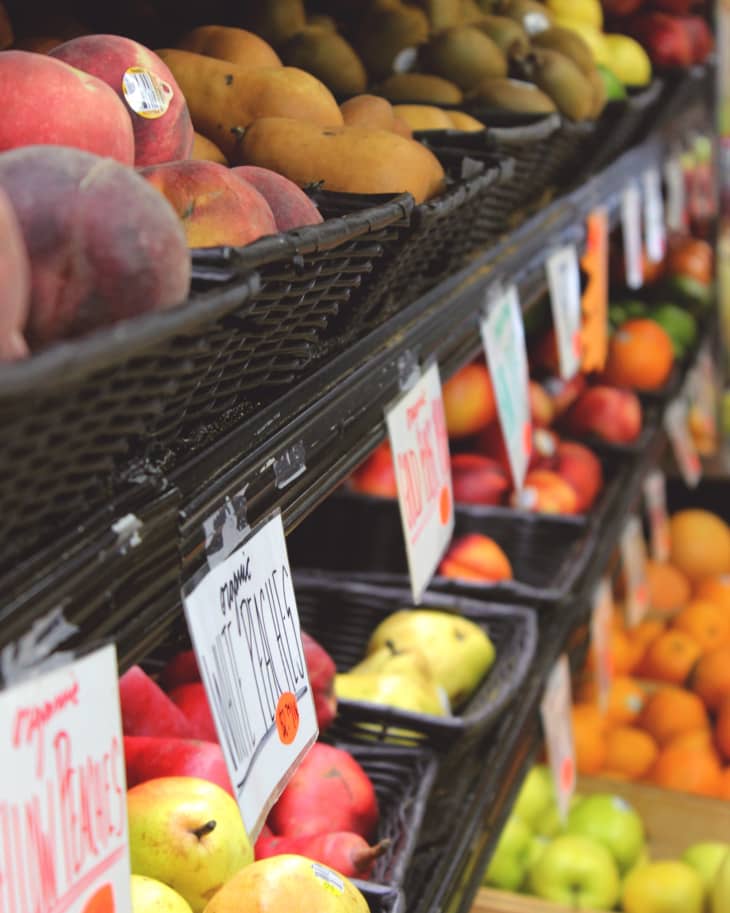8 Foods to Always Spend Money On
I’m a graduate student, so obviously I’m on a budget. But over the years, as I realize how connected my health and productivity are to the foods I eat, I’ve created a list of foods I’ve learned are always worth spending money on. I call it my core splurge list.
We all splurge on something. Shopping, eating out, trips — our paycheck destination always reveals our priorities. For me, long-term wellness is a priority, and although I currently have neither the time nor the resources to cut out all processed foods, I weigh the pros and cons of things like additives, preservatives, health benefits, and cost, and write out my splurge list.
Here are eight items I always spend money on.
1. Fresh Produce
During the summer, filling my kitchen with fresh fruits and vegetables is effortless and asks next to nothing of my wallet. But as autumn rolls in, and farms around America shift into winter mode, the price of fresh foods spikes. I buy them anyway. In six years of being a student, the common cold or flu never fails to catch me if I neglect my fresh fruits and veggies. One method to maintain diversity without spending too much at once is to buy, for example, two different fruits and two different veggies, and eat them until they’re gone.
2. Hormone- and Antibiotic-Free Meats
This is a big one. While I’m still not at a place where I can buy local meat, it’s important for me to eat meat from animals that have not been fed diets filled with pesticides, hormones, and antibiotics. In particular, antibiotics and hormones in animal diets have been tagged as possible culprits for a myriad of health trends today, none of which are positive. While local and grass-fed are always best, if that’s not an option, try to make a priority to buy organic meats from your supermarket.
3. Hearty Breads
Most “wheat” breads are barely better than white breads in terms of nutritional value. I always scan the label and look for a minimum of three grams of dietary fiber per slice. Even better, I buy heartier, grain-rich artisan breads from the bakery section of my mainstream grocery store. For just a few dollars more (or cents if they are on sale!) my sandwiches, sides, and snacks feel just a little fancier and I stay full for longer.
4. Quality Dressings
If you’re not going to make your own salad dressings, it’s worth it to invest in higher-quality, albeit pricier, salad dressings. Cheap salad dressings are filled with a myriad of ingredients you’re better off avoiding, including partially hydrogenated oils, older oils that may be rancid, high-fructose corn syrup, too much sugar, too much salt, and MSG, to name a few. Again, check the nutrition label: Buy the options that have the fewest unrecognizable ingredients.
5. Yogurt
Good yogurt is worth investing it, particularly if you like Greek yogurt. More expensive yogurts are usually made with fewer and better ingredients, and feature less sugar than cheaper brands.
6. Chocolate
Cheap chocolate is sad and makes me sad. It’s often full of additives and never melts properly on my tongue. Splurging on quality dark chocolates satiates my sweet tooth and replaces cheaper desserts, such as packaged baked goods and other empty carbs. Ditching processed desserts and treating myself to good chocolate is one of the best decisions I’ve made.
7. Coconut Oil
Yes, that tiny jar is expensive. But if you cook with lots of oils or butters, coconut oil can be your new best friend, as its one of the healthier fats. Extremely versatile, you can use it for sautéing anything, spreading it on your toast instead of butter, dropping a spoonful into your breakfast smoothie to keep you full for longer, and more.
8. Raw Honey
Honey is an antimicrobial and antibacterial food, and in moderation can be one of your best sweetener options. However, most honey in stores has been pasteurized, which eliminates most of honey’s virtues and renders it little more than syrupy sugar. Raw honey, while a bit pricier, comes with a host of benefits and is a great natural sweetener in recipes and drinks.
If you shop on a budget, do you have any items that you are always willing to spend a little extra for? Share in the comments below!
